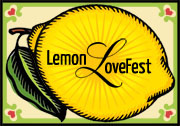|
09 Mar
2009 |
The Art of Food & Wine (part 3) 
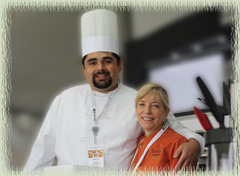 In part 1 of this series, we wrote about The Art of Food & Wine Palm Desert, where leading chefs, sommeliers, winemakers, food purveyors and artists came together for an event that took the wine and food festival concept to another level entirely. Chef Sara Moulton was on hand to educate while entertaining—something she does very well. Her website bio introduces her as “one of the hardest–working women in the food biz”. She is active and engaged—full of energy and enthusiasm for what she loves. She’s a chef and a celebrity, but she doesn’t fit today’s “celebrity chef” mold. She’s a performer, but not an actor. She’s a pioneer, but don’t call her that—it contradicts her youthfulness. We had the good fortune to sit down with Sara one evening after a day of cooking demos to ask her about her career, her family and the state of food in the media today.
In part 1 of this series, we wrote about The Art of Food & Wine Palm Desert, where leading chefs, sommeliers, winemakers, food purveyors and artists came together for an event that took the wine and food festival concept to another level entirely. Chef Sara Moulton was on hand to educate while entertaining—something she does very well. Her website bio introduces her as “one of the hardest–working women in the food biz”. She is active and engaged—full of energy and enthusiasm for what she loves. She’s a chef and a celebrity, but she doesn’t fit today’s “celebrity chef” mold. She’s a performer, but not an actor. She’s a pioneer, but don’t call her that—it contradicts her youthfulness. We had the good fortune to sit down with Sara one evening after a day of cooking demos to ask her about her career, her family and the state of food in the media today.
Known widely for her role as host of various cooking shows—Cooking Live, Cooking Live Primetime, and Sara’s Secrets and her work on and off camera as Food Editor of ABC-TV’s Good Morning America, Sara has also been the Executive Chef of Gourmet magazine for the past 23 years or so. She has authored cookbooks, such as Sara’s Secrets for Weeknight Meals and Sara Moulton Cooks at Home. In April 2008, she launched a new 20–episode television series on public television entitled Sara’s Weeknight Meals. Notably, the recipes from that show include recommended wine pairings. She enjoys mostly dry wines, but also some dessert wines (especially sauternes). Sara got her start before reality TV—back when food TV shows began to emerge from the brief cooking segments on programs like Good Morning America.
Sara, what formed your early career? “After college, I attended the Culinary Institute of America (CIA). Then, I worked as a chef in restaurants for seven years. After that, I did recipe testing and development. Later, I got the job at Gourmet magazine. I was in New York and I signed up to teach at Peter Kump’s New York Cooking School, which is now known as The Institute of Culinary Education (or ICE). At the time, I was a bit jaded, having been working as a chef for some years, but I thought Peter had a brilliant curriculum. The CIA had taught me technique. Peter taught me about taste. It was unique at the time. He would pick something–say, vinaigrette. He’d have a constant, such as the oil (maybe olive oil or vegetable oil or whatever). Then, he’d ask everyone to vary the acid—champagne vinegar, or lemon juice or balsamic or whatever. Suddenly, the traditional 3–to–1 ratio didn’t work each time. We’d experiment with the taste of different varieties of an ingredient. It was exciting, and it helped me bring food and teaching together.”
If you hadn’t been a chef, what profession would you have chosen? “What I really should have done, and what I’ve been able to do anyway, is be a teacher. When I was growing up in New York City, my mother joined a volunteer school program to help public school kids who were having a hard time in school. Later, after I grew up and was working at a bar, my mom ‘forced’ me to volunteer for that program as well. So, I became a tutor for kids in first through fifth grades. I read every book about how children learn, why they fail, how they succeed. Years later, I applied that experience to teaching adults about cooking. How to get them to move forward and cook more, and how to cook healthy meals.” (In part 2 of this series, we interviewed Chef Rick Tramonto, who got his start on one of Sara’s TV shows. Interestingly, Rick also has a penchant for teaching. When asked, Rick said he would have been a teacher if not already a chef.)
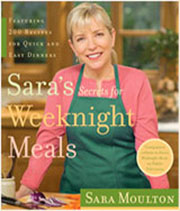 How did you get your children to eat healthy meals while they were growing up? Did you have them cook with you? “My husband and I have two children, Ruthie and Sam, four years apart in age. They’re in college now, but when they were younger they also went to academically challenging schools. I felt they needed to spend their time on homework, so I didn’t want them to take the time to cook with me every night. Cooking with them was limited mostly to the summer months. To keep them healthy, we’d just have healthy foods in the house. None of the chips, sodas and that sort of thing, except for special occasions. That seemed to work for us. There are so many pressures on kids today. You have to let kids become who they want to be. Every child is so different and your relationship with each child is different.”
How did you get your children to eat healthy meals while they were growing up? Did you have them cook with you? “My husband and I have two children, Ruthie and Sam, four years apart in age. They’re in college now, but when they were younger they also went to academically challenging schools. I felt they needed to spend their time on homework, so I didn’t want them to take the time to cook with me every night. Cooking with them was limited mostly to the summer months. To keep them healthy, we’d just have healthy foods in the house. None of the chips, sodas and that sort of thing, except for special occasions. That seemed to work for us. There are so many pressures on kids today. You have to let kids become who they want to be. Every child is so different and your relationship with each child is different.”
You worked with Julia Child. Tell us about that experience. “I worked with her in Boston starting in 1978 and it was great. I learned so much from her. She’s the one who told me to always have more than one job. She was one of the funniest people on earth. She would speak her mind on the air, but she was even funnier off the air. In 1981, I moved to New York and I missed Julia. That same year, Julia started working with Good Morning America. One time she was coming to New York and I asked her to stop in for dinner. She declined, saying she was too busy with the prep work for the GMA program. I offered to help her do the prep work so she could take the time for dinner. So, we went out to dinner and I helped her at GMA the next day. GMA recognized the value in having someone do some of the prep for Julia, so they hired me. Later that year, I got a restaurant job that wouldn’t allow me to do other outside work, but in 1987 I started at GMA full–time again for the next ten years.”
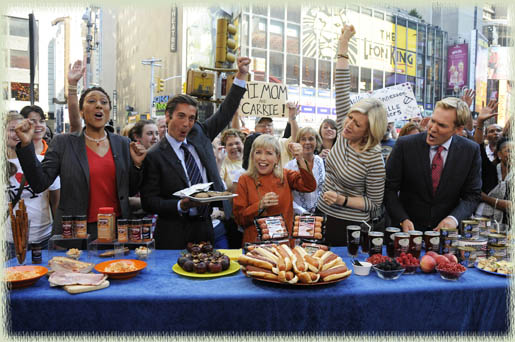
Did you like being on camera? “I never wanted to be on camera. In fact, for many years, I just did the prep work for Julia off camera. Charlie Gibson (a wonderful supporter) kept saying I should be on camera, but I avoided it. Finally, around 1995, GMA decided to do a segment about their ‘secret weapon’ and feature me on the air. I got through that and it eventually led to a call from the TV Food Network. They knew I ran the GMA kitchen. They were new and I knew how to do a food segment, how to time it correctly, how to style it and do swaps, how to shorten or lengthen a segment. They wanted me to run their kitchen. I declined, so they asked me if I would be their food editor, which was a desk job. I said ‘no’ to that, so they asked me if I’d do some ‘on air’ cooking. That led to a pilot show on How To Boil Water, which has also been done by others, such as Emeril Lagasse and Tyler Florence. I didn’t like the experience. It’s one thing to be a guest on air with lots of other people around you, such as on GMA; it’s an entirely different thing to be on the air alone. You have no connection to anyone, except looking into a camera. I didn’t smile once. I held up some asparagus and it shook back and forth. But, back in those days—unlike today—you could get on the job training. So, I got some media training and did five half–hour Chef du Jour shows for them. On April 2, 1996, they hired me to do Cooking Live. I did 1,500 shows. When you do a show 185 nights a year, it adds up.”
So, GMA really set the stage for you, so to speak? “It was great, and I worked with everybody. Any chef who was anybody came on that show. That was very useful to me later, when I had my own show, because I knew which chefs were good on TV and which weren’t. Who was rude or difficult and who was easy to work with. It was kind of like getting retribution on the people from kindergarten.”
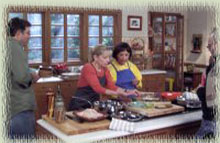 You were one of the Food Network’s defining personalities. How have things changed there and in the food media generally, especially for women chefs? “I joined shortly after Mario Batali and Emeril Lagasse. At first, the Food Network didn’t have many women chefs. Later on, they had mostly women chefs. Food Network began to head in a different direction as they targeted a different demographic audience—15–35 year old males. Now, I’m on PBS doing my new show, Sara’s Weeknight Meals. I’ve seen the rise of reality food TV and the food TV contest shows. I’ve seen a lot of chefs come out with product lines. I wouldn’t do that unless I felt there was really something special about the products; not just marketing my name. The rise of food on the internet and the social networking around food has been amazing to see.”
You were one of the Food Network’s defining personalities. How have things changed there and in the food media generally, especially for women chefs? “I joined shortly after Mario Batali and Emeril Lagasse. At first, the Food Network didn’t have many women chefs. Later on, they had mostly women chefs. Food Network began to head in a different direction as they targeted a different demographic audience—15–35 year old males. Now, I’m on PBS doing my new show, Sara’s Weeknight Meals. I’ve seen the rise of reality food TV and the food TV contest shows. I’ve seen a lot of chefs come out with product lines. I wouldn’t do that unless I felt there was really something special about the products; not just marketing my name. The rise of food on the internet and the social networking around food has been amazing to see.”
How so? “Men have been networking for business for a long time. For women, it’s a newer phenomenon. Julia Child always had a group of women and we did charity benefits. We wanted to make it official and more organized, so we started the Boston Women’s Culinary Guild in the late 1970s. When I moved to New York, the city didn’t have many opportunities to offer women chefs, so I co–founded the New York Women’s Culinary Alliance, an organization of professional women in the food and wine industry, dedicated to encouraging cooperation, networking, and education among its members. It started with a lot of people from Gourmet magazine. You have to be ‘active’ by offering programs or serving on committees. It’s been great for networking and education for women in the tri–state area.”
What is your favorite cookbook (other than one you’ve authored)? “I really don’t have favorite cookbooks. I do have favorite food authors. I’m mostly interested in cuisine that I don’t already know much about. To name a few: Madhur Jaffrey and Julie Sahni for Indian cuisine. Eileen Yin Fei Lo, Nina Simonds and Martin Yan for Chinese cuisine. Lidia Bastianich and Marcella Hazan for Italian. Rick Bayless and Roberto Santibañez for Mexican. Jacques Pépin and Jean Anderson.”
If you had to choose only one cuisine style to cook and teach, what would it be? “My forte is French cuisine, because that is what I learned at the CIA. In terms of what is exciting to me right now, it would be Indian cooking, with all of its layers of flavors and the spices that they use for both cooking and health. They have the most exciting vegetarian cuisine. Also, I love Mexican and Latin cuisines, and sushi.”
Chatting with Sara was like visiting with an old friend, especially since Leah has been following Sara’s career since Sara’s early Food Network days. Her commitment to educating the public about enjoying healthy and tasty home cooked meals is evident; from her official website to her TV shows and personal appearances, you can count on Sara for culinary enlightenment. Thanks, Sara!











